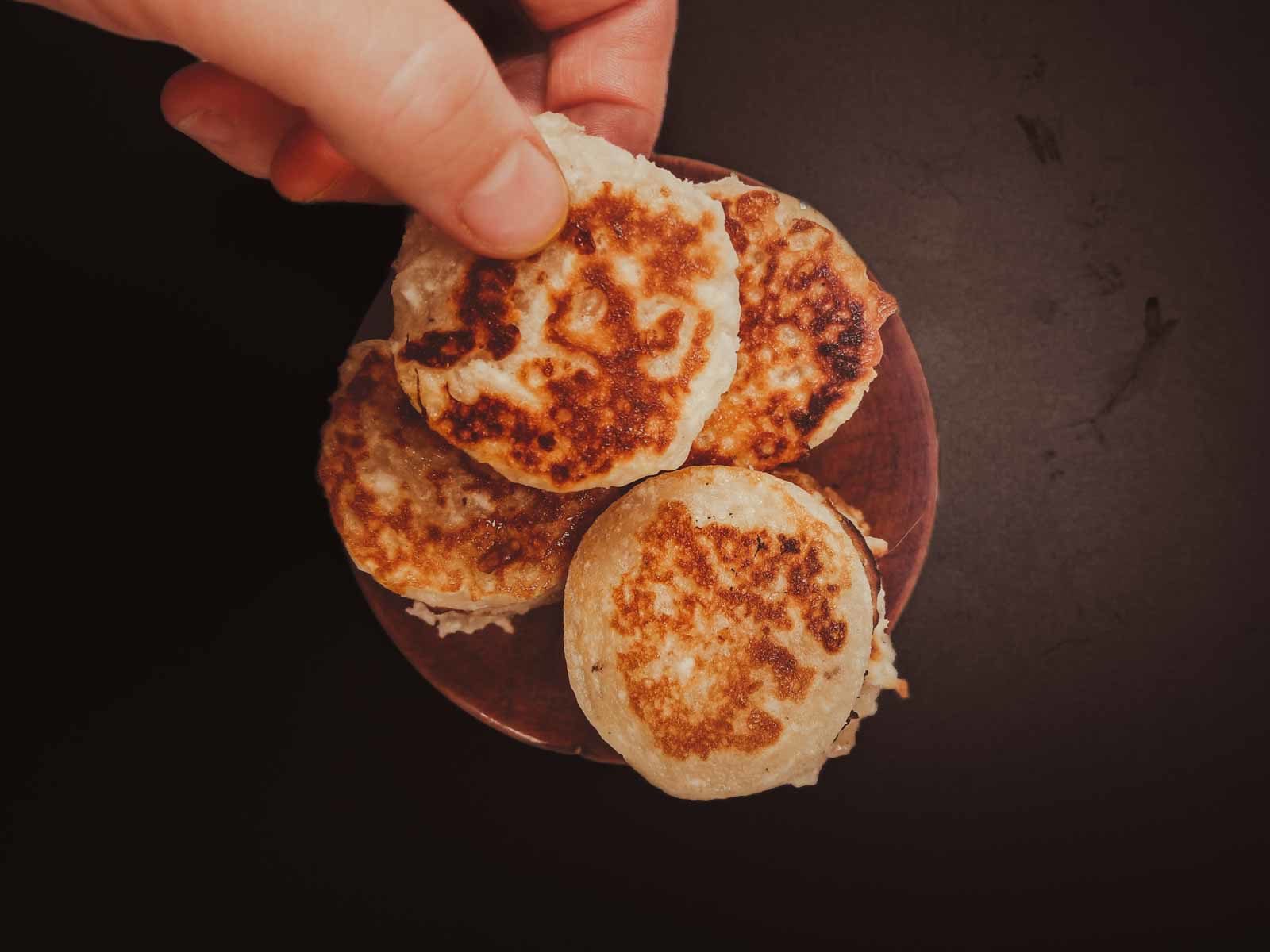This vegan kanom baa bin recipe is based on the more traditional, old fashioned cake still prepared by street food vendors in Thailand today (not this recipe of the same designation). There are variations on this method, which I explain shortly.
The word kanom, as I've mentioned many times on this site, refers to snacks. Meanwhile, baa bin translates to reckless or crazy.

History of kanom baa bin
From what I can understand there are a couple of prominent origin narratives regarding kanom baa bin. The first places the recipe creation in the hands of someone called Mae Bin in Ayutthaya province during the reign of Rama V (1868-1910). This story maintains the original name of the sweet was paa bin, but with time the name was distored to its current form.
The second origin narrative locates kanom baa bin as a distant relative of the Portuguese cake queijada de Coimbra. This story links the final syllable of Coimbra, a city in Portugal, with the word baa in Thai. Whether rooted in reality or not, attributing Thai foods to foreign entities can be a sensitive topic. One government source I read regarding kanom baa bin expressed annoyance that Thai people cannot accept their own country is a nation rich with its own traditions and culture, that there is no need to steal from another country's traditions.
Either way, the dish as it exists today in Thailand is very likely from Ayutthaya and I would wager the real story contains an element of truth from both narratives. Culture is fluid and nothing exists in a vacuum, but we can accept this concept while also maintaining respect for local ideas and production.
From my own research collection, I've seen a recipe for kanom baa bin in work referencing the reign of Rama VI, which was from 1910-1925. Thus this coconut pikelet has been around for at least ballpark 100 years.
Instructions
In the images below you can see I use small (5 centimetre) rings for moulding kanom baa bin into a uniform shape. This is entirely optional. The batter is quite thick so you can just freeform plop a generous tablespoon's worth onto your skillet to cook.
Variations of kanom baa bin
Kanom baa bin comes in two preparations: baked and fried.
First we have kanom baa bin boraan ขนมบ้าบิ่นโบราณ, a sort of coconut pikelet made with coconut and glutinous (sticky) rice flour. The batter is typically moulded into small circular moulds but can also be cooked freeform on a skillet. This is the original form of this sweet and the recipe featured in this post.
This style is further broken down into various flavours with added ingredients, so you might see various grains or flavourings added (e.g. corn and pandan) in the wild.
Kanom baa bin op ขนมบ้าบิ่นอบ is a more modern take on the former preparation, where the batter is pressed into a typically square mould and baked.
In the past I wrote about a third variation of kanom baa bin, which combines the above two methods. I'm sure I consumed this concept from a cookbook but I couldn't now tell you which one. This is not a style of baa bin preparation I have seen in Thailand. The reason I went off piste in form was to create a dessert to suit the aesthetic of a Thai-Japanese fusion supper club I co-hosted awhile back.
Equipment
While cheap and cheerful nonstick aluminium pans are purported non-champions in this era, they hang around for good reason: so long as the coating is intact they work effortlessly and with minimal added oil. I use a 28 inch pan that cost me a tenner at my local Asda.
Storage
Kanom baa bin will keep for a week in the fridge, if you manage to not dispose of them all in your gob immediately after cooking. These are best served straight off the pan so I recommend not having leftovers.
📖 Recipe
kanom baa bin boraan ขนมบ้าบิ่นโบราณ
Ingredients
- 115 grams shredded coconut fresh or frozen (defrosted)
- 55 grams glutinous rice flour
- ⅛ teaspoon salt
- 2 tablespoons + 2 teaspoons coconut milk
- 2 tablespoons soft palm sugar 55 grams
- flavourless oil, for frying
Instructions
- Mix all ingredients and set aside for 10 minutes.
- Heat a nonstick pan to medium heat. Dip a wad of kitchen roll in some oil then use the towel to rub the thinnest coat of oil over the surface of the pan.
Ring mould method
- Place moulds on pan and fill with batter. Tap the batter down with the back of a spoon so it's even with the upper ridges of the ring. Cook for a minutes or two and flip over. The ring may come loose, but if the cake is already cooked enough this isn't a problem. You can either remove the ring at this point or after the pikelets are finished cooking.
Freeform method
- Dollop the batter in heaped tablespoons onto the pan. Cook for a minute or two and flip. Both sides should be a nice uniform brown, but not burnt.